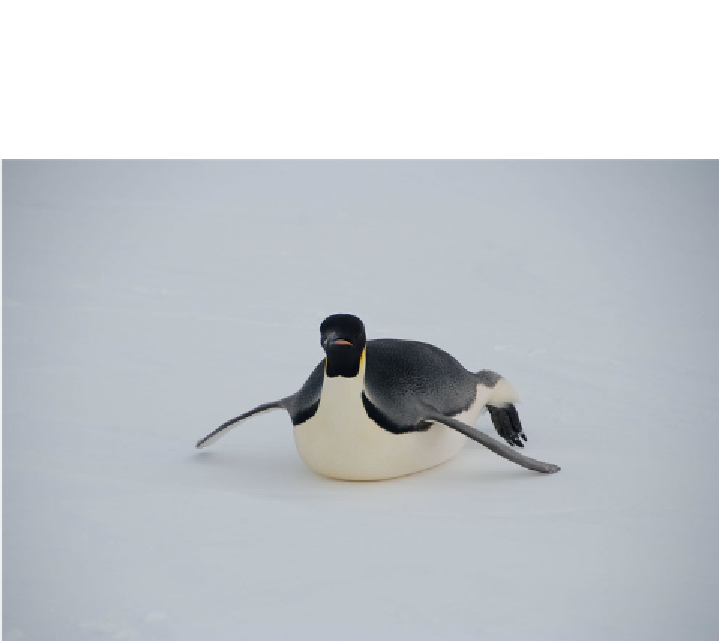Geoscience Reference
In-Depth Information
Box 6.3
Emperor penguin
Figure 6.3
Emperor penguin, the largest penguin and the only one to incubate its eggs through
the winter. (Credit: Angelika Brandt)
The largest of the living penguins (fossils of a species almost twice as tall
have been found), emperor adults are over 1m tall and weigh 20
40 kg.
They breed during the winter on the sea ice in what must be one of the most
inhospitable habitats on Earth. The size of the total population is not known
with any accuracy as many of the colonies have rarely been visited, but it is
estimated that there may be 400 000 birds and, recently, remote-sensing
techniques have been applied to provide a more accurate overall population
estimate. After laying a single egg in May, which the male then balances on his
feet and keeps covered with a
-
flap of skin, the female leaves for the long walk to
the sea across the ice and 2months
feeding. Meanwhile the male fasts until
the egg hatches around 8 weeks later and the female returns to feed the chick
and take over parental duties. Then, at last, the male can walk up to 100 km to the
sea to feed. Both during the incubation and the young chick stage all the adults
form a dynamic huddle through which every bird slowly walks, gaining an
equal share of protection from the low winter temperatures and high winds.
Because most emperor colonies are found on fast ice they are likely to be a
species that is directly affected by changes in the sea ice environment that
may occur as a result of global warming.
'





Search WWH ::

Custom Search